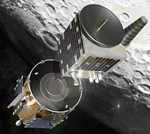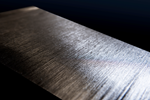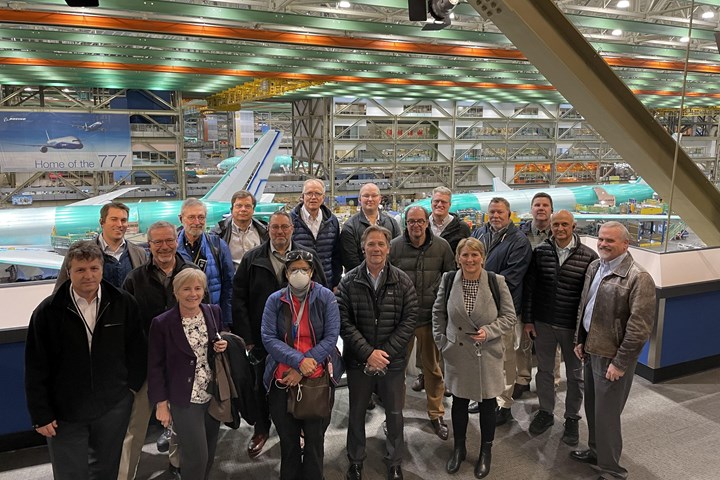NASA awardees to develop sustainable aviation composite tech
Fourteen Advanced Composites Consortium organizations support the evaluation and development of next-gen thermosets, resin-infused composites and thermoplastics at small scales.
Members of NASA’s Advanced Composites Consortium (ACC), including representatives from NASA, the Federal Aviation Administration (FAA), Boeing, Spirit AeroSystems, Collins Aerospace, Northrop Grumman and Electroimpact during a tour of Boeing’s facility in Everett, Washington. Photo Credit: Boeing
NASA (Washington, D.C., U.S.) has issued $50 million in awards to 14 organizations under the Hi-Rate Composite Aircraft Manufacturing (HiCAM) project to develop manufacturing processes and advanced composite materials for aircraft structures. HiCAM seeks to reduce the cost and increase the production rate of composite structures made in the U.S., while saving airlines fuel and reducing emissions to make commercial aviation more sustainable.
“HiCAM will bring the value of composite technology to the high-volume, single-aisle fleet and accelerate aviation towards meeting its goal of net-zero carbon emissions,” says Dr. Richard Wahls, mission integration manager for the Sustainable Flight National Partnership at NASA headquarters in Washington.
For its contribution to the Sustainable Flight National Partnership, HiCAM works with a public-private partnership, the Advanced Composites Consortium (ACC), which enables partners to take advantage of each other’s expertise and increase the likelihood of the U.S. aviation industry adopting results. Organizations within the consortium that received funding through these latest awards will match NASA’s funding.
“By working together as a team, rather than as competitors, NASA and our partners will accelerate the development of technologies and the transition of those technologies onto the next generation of transport aircraft,” says Dr. Richard Young, HiCAM project manager at NASA’s Langley Research Center in Hampton, Virginia.
When NASA launched HiCAM, the project considered multiple materials and manufacturing techniques. HiCAM established three manufacturing concepts: next-generation thermosets, resin-infused composites and thermoplastic composites. The new awards will support the evaluation and development of these concepts at small scales, including experiments in material processing, assembly techniques, inspection and structural performance.
The ACC member organizations that received NASA funding through these latest awards are:
- Advanced Thermoplastic Composites (ATC, Post Falls, Idaho, U.S.)
- Boeing (St. Louis, Mo., U.S.)
- CGTech (Irvine, Calif., U.S.)
- Collier Aerospace (Newport News, Va., U.S.)
- Collins Aerospace (Chula Vista, Calif., U.S.)
- Electroimpact (Mukilteo, Wash., U.S.)
- Hexcel (Stamford, Conn., U.S.)
- Lockheed Martin (Palmdale, Calif., U.S.)
- Northrop Grumman (Clearfield, Utah, U.S.)
- Solvay (Alpharetta, Ga., U.S.)
- Spirit AeroSystems (Wichita, Kan., U.S.)
- Toray Advanced Composites (TAC, Morgan Hill, Calif., U.S.)
- University of South Carolina (USC, Columbia, S.C., U.S.)
- Wichita State University (WSU) National Institute for Aviation Research (NIAR)
The additional members of the consortium are:
- NASA Langley
- Aurora Flight Sciences (Manassas, Va., U.S.)
- Convergent Manufacturing Technologies US (Seattle, Wash., U.S.)
- The Federal Aviation Administration (FAA) William J. Hughes Technical Center at the Atlantic City International Airport (New Jersey)
- GE Aviation (Evandale, Ohio,, U.S.) Mississippi State University (MSU)
At the conclusion of this phase of the project, HiCAM will select the most promising concepts for further development, after which will follow a full-scale demonstration of fuselage or wing components by 2028.
In total, NASA plans to invest $184 million in HiCAM while partner organizations are expected to contribute $136 million, resulting in a total operating budget of $320 million.
Related Content
-
Microwave heating for more sustainable carbon fiber
Skeptics say it won’t work — Osaka-based Microwave Chemical Co. says it already has — and continues to advance its simulation-based technology to slash energy use and emissions in manufacturing.
-
Recycling end-of-life composite parts: New methods, markets
From infrastructure solutions to consumer products, Polish recycler Anmet and Netherlands-based researchers are developing new methods for repurposing wind turbine blades and other composite parts.
-
Watch: A practical view of sustainability in composites product development
Markus Beer of Forward Engineering addresses definitions of sustainability, how to approach sustainability goals, the role of life cycle analysis (LCA) and social, environmental and governmental driving forces. Watch his “CW Tech Days: Sustainability” presentation.

















